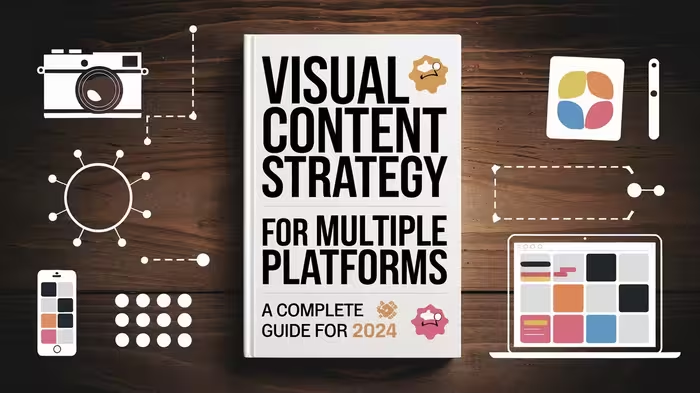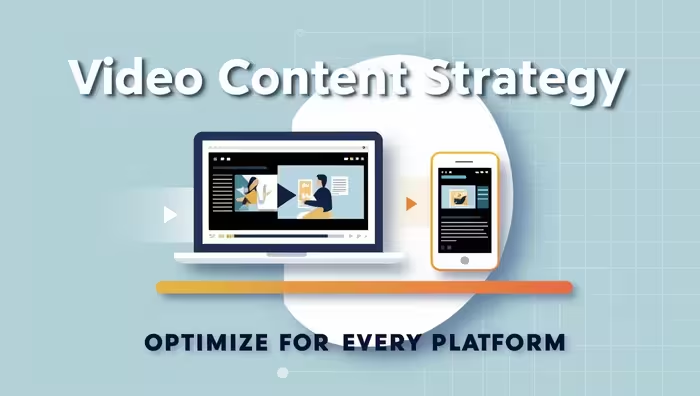Ever wondered why some brands seem to nail their visual content across every platform while others struggle to make an impact? You’re not alone! In today’s digital world, having a strong visual content strategy isn’t just nice to have – it’s essential for success. Let’s dive into everything you need to know about creating and managing visual content that works across multiple platforms.
Understanding Visual Content Strategy
What is Visual Content Strategy?
Think of visual content strategy as your roadmap for sharing your brand’s story through images, videos, and graphics. It’s like being the director of your own brand movie, where every visual element plays a specific role in telling your story. A visual content strategy helps you plan, create, and share content that catches eyes and keeps attention across different social media platforms and websites.
Your strategy should answer basic questions like:
- What kind of visual content will you create?
- Where will you share it?
- Who is your target audience?
- How will different platforms help achieve your goals?
Why Visual Content Matters in 2024
Let’s face it – we’re living in a world where people’s attention spans are shorter than ever. Did you know that humans process visual information 60,000 times faster than text? That’s why visual content has become super important for any successful marketing strategy.
In 2024, visual content is more crucial than ever because:
- People remember 80% of what they see but only 20% of what they read
- Posts with images get 2.3 times more engagement than those without
- Video content is expected to make up 82% of all internet traffic
- Mobile users spend more time looking at images than reading text
Key Elements of a Successful Visual Strategy
A winning visual strategy is like a well-organized toolbox. Here are the essential tools you need:
- Brand Guidelines: Your visual rulebook that keeps everything consistent
- Content Themes: Regular topics or styles that your audience can recognize
- Quality Standards: Rules for what makes good visual content
- Platform-Specific Plans: Different approaches for different platforms
Platform-Specific Visual Content Requirements
Instagram Visual Best Practices
Instagram is all about beautiful visuals, but what works here might not work elsewhere. Here’s what you need to know:
- Feed Posts: Use 1:1 square format for versatility
- Stories: Create vertical content (9:16 ratio)
- Reels: Focus on quick, engaging video content
- Carousel Posts: Tell stories through multiple images
- Quality: Always use high-resolution images
Remember to use Instagram’s features like filters and stickers thoughtfully – they should enhance your content, not overshadow it.
Facebook Content Guidelines
Facebook’s visual content needs differ from Instagram’s in several ways:
- Cover Photos: Use 16:9 ratio for desktop optimization
- Link Posts: Include images that won’t get cropped
- Video Content: Aim for 1-3 minute videos
- Image Posts: Use multiple image formats for variety
- Graphics: Keep text under 20% of the image area
LinkedIn Professional Visuals
LinkedIn demands a more professional approach to visual content:
- Company Page Images: Use professional photography
- Document Shares: Create visually appealing slide decks
- Video Content: Focus on educational and informative content
- Infographics: Share industry insights and data
- Profile Headers: Maintain professional branding
TikTok Video Specifications
TikTok has revolutionized how we think about video content:
- Video Length: Plan for various durations (15s to 3min)
- Vertical Format: Always shoot in 9:16 ratio
- Fast-Paced Content: Keep viewers engaged
- Trending Formats: Stay current with platform trends
- Audio Integration: Music and sound effects matter
Pinterest Image Optimization
Pinterest requires specific approaches for success:
- Vertical Pins: Use 2:3 ratio for best visibility
- Rich Pins: Include metadata and descriptions
- Multiple Images: Create carousel pins
- Video Pins: Incorporate short-form video content
- Text Overlay: Make pins informative at a glance
Creating a Cross-Platform Visual Strategy
Brand Consistency Across Platforms
Think of your brand as a person – they might dress differently for different occasions, but you can still recognize them. Your visual content should work the same way:
- Use consistent color schemes
- Maintain recognizable design elements
- Keep your logo placement consistent
- Use similar filters or editing styles
- Develop a signature look
Content Adaptation Techniques
Not every piece of content works the same way on different platforms. Here’s how to adapt:
- Start with a “hero” piece of content
- Break it down into platform-specific formats
- Adjust aspect ratios for each platform
- Modify text and overlay elements
- Optimize for platform-specific features
Visual Content Calendar Planning
A content calendar is your best friend for staying organized:
- Plan content themes monthly
- Schedule platform-specific posts
- Track performance metrics
- Note seasonal trends
- Include campaign deadlines
Tools and Resources
Essential Design Tools
These tools will make your life easier:
- Canva: For quick, professional designs
- Adobe Creative Suite: For advanced editing
- Snapseed: For mobile photo editing
- Filmora: For video editing
- Over: For mobile graphic design
Content Management Systems
Keep your content organized with:
- Later: For social media scheduling
- Hootsuite: For cross-platform management
- Buffer: For post scheduling
- Planoly: For visual feed planning
- ContentCal: For team collaboration
Analytics and Tracking Tools
Measure your success with:
- Google Analytics: For website performance
- Platform-specific analytics tools
- Social media management dashboards
- Heat mapping tools
- Engagement tracking software
Measuring Success
Key Performance Indicators
Track these important metrics:
- Engagement rates
- Reach and impressions
- Click-through rates
- Conversion rates
- Share and save rates
Platform-Specific Metrics
Each platform has unique metrics to watch:
- Instagram: Story completion rates
- Facebook: Video retention rates
- LinkedIn: Document download rates
- TikTok: Video completion rates
- Pinterest: Pin save rates
ROI Calculation Methods
Calculate your return on investment by:
- Tracking direct conversions
- Measuring brand awareness increase
- Monitoring audience growth
- Analyzing engagement trends
- Computing cost per engagement
Conclusion
Creating a successful visual content strategy for multiple platforms isn’t just about making pretty pictures – it’s about telling your brand’s story in a way that resonates with different audiences across various platforms. Remember to stay consistent with your brand while adapting to each platform’s unique requirements. Keep testing, measuring, and adjusting your strategy based on performance data.
Frequently Asked Questions
- How often should I post visual content on each platform?
It depends on your audience and resources, but aim for at least 3-5 times per week on major platforms like Instagram and Facebook, 2-3 times on LinkedIn, and daily on TikTok for best results. - What’s the best way to maintain brand consistency across platforms?
Create a comprehensive brand style guide that includes color codes, font choices, logo usage guidelines, and visual tone of voice. Share this with everyone involved in content creation. - Should I create different content for each platform?
Yes, but start with a core piece of content and adapt it for each platform’s specific requirements and audience preferences rather than creating entirely new content for each. - How can I measure if my visual content strategy is working?
Track platform-specific metrics, engagement rates, and conversion data. Compare these against your goals and industry benchmarks to gauge success. - What’s the most important aspect of a visual content strategy?
Consistency in both quality and posting schedule, while maintaining brand identity across all platforms, is crucial for building recognition and trust with your audience.


